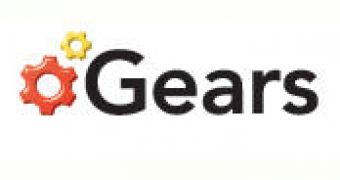The HTML5 standard is evolving, albeit slowly, and, perhaps more importantly, web browsers have been implementing support for many of the features described in the proposed web standard. There is still plenty to do but it has gotten to a point where it is a viable alternative to proprietary plugins or technologies. Google, one of the big supporters of HTML5, thinks that it is now ready, or very close, to have it implemented at a larger scale so much so that it is gradually dropping support for its own Gears plugin in favor of HTML5.
"If you've wondered why there haven't been many Gears releases or posts on the Gears blog lately, it's because we've shifted our effort towards bringing all of the Gears capabilities into web standards like HTML5. We're not there yet, but we are getting closer," Ian Fette from the Google Gears Team wrote.
"We realize there is not yet a simple, comprehensive way to take your Gears-enabled application and move it (and your entire userbase) over to a standards-based approach. We will continue to support Gears until such a migration is more feasible, but this support will be necessarily constrained in scope," he added.
It's no surprise to anyone that it has come to this, it was only a matter of 'when' rather than 'if'. The company has said time and time again that Gears was only a temporary measure and that HTML5 was the way forward. Development has been slowing down for a while now, and Google is finally stating that it will no longer add any new features to the tool.
What's more, it will also stop supporting Gears for Safari on OS X Snow Leopard and later, citing the disproportionate amount of resources it would take to do so. Google has been struggling on the Mac platform with Chrome too, which is generally behind the Windows and Linux versions in terms of features. The company says it will continue to support Firefox; in fact, support for 3.6 should be coming soon, and Internet Explorer for the time being but it will only do so with minimal effort until the arrival of a practical way of porting web apps built for Gears to HTML5.
The search giant reveals that many of the Gears features now have equivalents implemented with HTML5 and it is supporting quite a few of them in Chrome. "In January we shipped a new version of Google Chrome that natively supports a Database API similar to the Gears database API, workers (both local and shared, equivalent to workers and cross-origin workers in Gears), and also new APIs like Local Storage and Web Sockets. Other facets of Gears, such as the LocalServer API and Geolocation, are also represented by similar APIs in new standards and will be included in Google Chrome shortly," Fette explained.
The company has always been a great supporter of web standards and generally strives to implement its apps and websites using standard, open technologies. One problem with web standards though is that they tend to move rather slowly, something Google isn't quite adept at. On several occasions, it had to push ahead with a technology as a temporary measure while a standard way of doing the same thing was being developed.
Google Gears is the most obvious example of this but there are others like the recent support for the HTML5 video component on YouTube. HTM5 is obviously an open standard but YouTube chose to support the proprietary and 'not really free' h.264 video codec over open alternatives. This is likely a temporary measure but it does show that Google puts features first and standards second.
Google Gears for Windows is available for download here.

 14 DAY TRIAL //
14 DAY TRIAL //